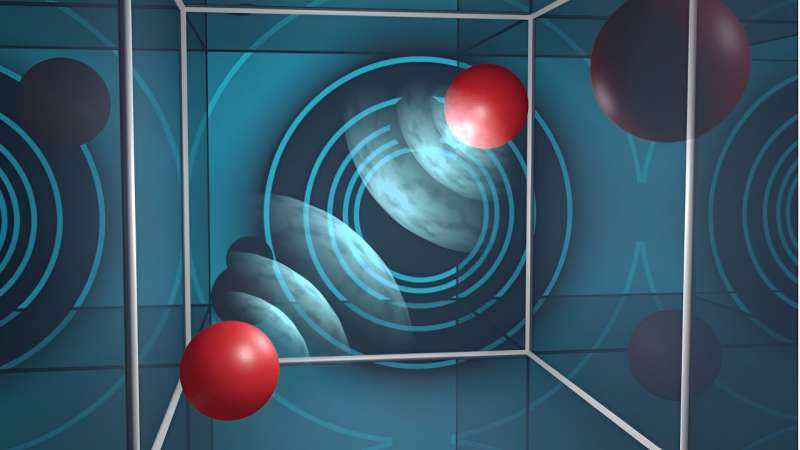This article has been reviewed according to Science X's editorial process and policies. Editors have highlighted the following attributes while ensuring the content's credibility:
fact-checked
peer-reviewed publication
trusted source
proofread
Understanding charged particles helps physicists simulate element creation in stars

New research from North Carolina State University and Michigan State University opens a new avenue for modeling low-energy nuclear reactions, which are key to the formation of elements within stars. The research lays the groundwork for calculating how nucleons interact when the particles are electrically charged.
The work appears in Physical Review Letters.
Predicting the ways that atomic nuclei—clusters of protons and neutrons, together referred to as nucleons—combine to form larger compound nuclei is an important step toward understanding how elements are formed within stars.
Since the relevant nuclear interactions are very difficult to measure experimentally, physicists use numerical lattices to simulate these systems. The finite lattice used in such numerical simulations essentially acts as an imaginary box around a group of nucleons that enables physicists to calculate the properties of a nucleus formed out of these particles.
But such simulations have so far lacked a way to predict properties that govern low-energy reactions involving charged clusters arising from multiple protons. This is important because these low-energy reactions are vital to element formation in stars, among other things.
"While the 'strong nuclear force' binds protons and neutrons together in atomic nuclei, the electromagnetic repulsion between protons plays an important role in the nucleus' overall structure and dynamics," says Sebastian König, assistant professor of physics at NC State and corresponding author of the research.
"This force is particularly strong at the lowest energies, where many important processes take place that synthesize the elements that make up the world we know," König says. "But it is challenging for theory to predict these interactions."
So König and colleagues decided to work backward. Their approach looks at the end result of the reactions within a lattice—the compound nuclei—and then backtracks to discover the properties and energies involved in the reaction.
"We aren't calculating the reactions themselves; rather, we're looking at the structure of the end product," König says. "As we change the size of the 'box,' the simulations and results will also change. From this information, we can actually extract parameters that determine what happens when these charged particles interact."
"The derivation of the formula was unexpectedly challenging," adds Hang Yu, graduate student at NC State and first author of the work, "but the final result is quite beautiful and has important applications."
From this information the team developed a formula and tested it against benchmark calculations, which are evaluations done via traditional methods, to ensure the results were accurate and ready to be used in future applications.
"This is the background work that tells us how to analyze a simulation in order to extract the data we need to improve predictions for nuclear reactions," König says. "The cosmos is enormous, but to understand it you have to look at its tiniest components. That's what we're doing here—focusing on the small details to better inform our analysis of the bigger picture."
NC State graduate student Hang Yu is first author of the work. Dean Lee, professor of physics and theoretical nuclear science department head at the Facility for Rare Isotope Beams at Michigan State University, co-authored the work. Lee was formerly at NC State and remains an adjunct professor of physics at NC State.
More information: Hang Yu et al, Charged-Particle Bound States in Periodic Boxes, Physical Review Letters (2023). DOI: 10.1103/PhysRevLett.131.212502
Journal information: Physical Review Letters
Provided by North Carolina State University





















